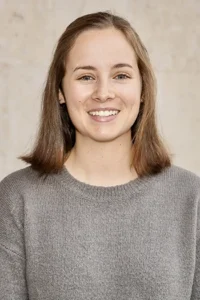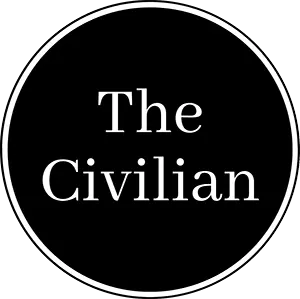Journal articles can be difficult to understand, even for scientists in the same field of study. There are many reasons why this happens. The most obvious is that “difficult to understand” is simply the writing style journal readers and editors today have grown accustomed to seeing. Articles written in a passive voice using dense, jargon-laden run-on sentences is how most journal articles are written nowadays (and to a much greater extent than even a few decades ago). Scientists deviate from this norm at their peril because their article might get rejected.
This writing style also exists because many fields of science have grown increasingly complex over time—too complex to always explain things clearly to the non-scientist; because science has become increasingly international in nature, and articles are being written by researchers for whom English is a second language; because there has been an explosive growth in new, low-quality journals over the last 20 years, which have neither the expertise nor the resources to devote to editing; and more.
So why worry? This situation doesn’t bother everyone. But for Ashley Moses, this is a problem in need of a solution. Moses is a Neurosciences PhD student at Stanford University who is working to make difficult-to-understand research papers more readable, both for other researchers and for the general public. To do this, she has created a new nonprofit called The Civilian, which helps scientists share their knowledge and scientific discoveries with the world.
So far, the Civilian has worked with researchers from 14 countries and 18 US states, and these numbers continue to grow. Moses hopes that, through The Civilian’s work, the public can more easily access and appreciate science, and a conversation can be started about how to incentivize more and better science communication in academia.
SCI: Tell us how you came to this realization and what fueled your passion for change?
 AM: I’m the first person in my family to receive a PhD, and one of the only people in my family who has pursued a career in science, let alone neuroscience. Every time I go home, my grandparents ask me when I’m going to cure Alzheimer’s or be the next Surgeon General of the United States. Haha. I try to explain that those things are not what I do, but I can’t blame them for thinking that’s what science is about. When I got to graduate school at Stanford, I took a molecular neuroscience class and was assigned to read and present a molecular neuroscience paper. As I was reading the paper, I had absolutely no idea what was going on and was struck by the fact that if I couldn’t understand this paper, even as a neuroscientist myself, then how could anyone else, like my grandparents, be expected to understand? It makes sense that certain members of the public think all science is boring, or elite, or they have given up trying to understand it because it’s all so complicated. Can we blame them? We aren’t sharing the knowledge we are gaining or the discoveries we are uncovering.
AM: I’m the first person in my family to receive a PhD, and one of the only people in my family who has pursued a career in science, let alone neuroscience. Every time I go home, my grandparents ask me when I’m going to cure Alzheimer’s or be the next Surgeon General of the United States. Haha. I try to explain that those things are not what I do, but I can’t blame them for thinking that’s what science is about. When I got to graduate school at Stanford, I took a molecular neuroscience class and was assigned to read and present a molecular neuroscience paper. As I was reading the paper, I had absolutely no idea what was going on and was struck by the fact that if I couldn’t understand this paper, even as a neuroscientist myself, then how could anyone else, like my grandparents, be expected to understand? It makes sense that certain members of the public think all science is boring, or elite, or they have given up trying to understand it because it’s all so complicated. Can we blame them? We aren’t sharing the knowledge we are gaining or the discoveries we are uncovering.
I feel researchers have a responsibility to share their knowledge with the world and I want to help lead these efforts. My hope is that everyone has the chance to learn about anything. I hope The Civilian inspires members of the non-scientific public to believe that they can be a scientist, and I hope it equips scientists with the skills to share their knowledge with the world.
SCI: Do you see other consequences from this gap between access and understanding?
AM: Every year, more than 4 million scientific research papers are published, and this number continues to grow, doubling around every 20 years. With the average U.S. reading ability hovering around 7th-8th grade level, and scientific papers being written at around the 17th-20th grade level, the vast majority of these papers can’t be understood by a general audience.
This inaccessibility to research prevents people from learning about scientific discoveries. For instance, it prevents people from understanding research in climate change, the latest medical advances, and so much more. It makes it harder for folks to appreciate our vast and rapidly accumulating body of knowledge in the world.
Readability isn’t the only barrier, of course; for huge swaths of research, there are also pricey paywalls in place. Additionally, when science information can’t be understood, it leads to the spread of inaccurate information and distrust in science. Then, this distrust in science makes it harder for scientists to share accurate information. We need to prioritize making accurate information accessible from the beginning if we are to have any hope of breaking this cycle.
SCI: How is the Civilian addressing this need?
AM: We publish an open-access journal that works with researchers to create lay summaries of their published academic work. These summaries are written by the researchers themselves at around a 10th-grade reading level, allowing the public to hear from the scientists that did the work in a way they can understand. The Civilian provides free editing services to give each researcher individualized feedback (including feedback from members of the public) and the chance to develop their research communication skills. The summaries are also translated into seven different languages. All types of scientific research are included to give readers a chance to learn about and be inspired by a multitude of topics.
SCI: How do you propose fixing this issue?
AM: I think universities can make a big impact here by making science communication and outreach required and incentivized within academia. We need to get to a place where for every academic journal article, at least one author should write and publish a lay summary of that article at a level the general public can understand. AI might be used for some of this in the future, but we still need to equip researchers with the skills to communicate effectively. In addition, science communication training and activities should be required for all graduate students and professors.
We should also add to the current tenure evaluation criteria to evaluate professorial candidates for their science communication efforts. The Civilian is working on creating a new “C-index” to assess the impact of the scientist’s work through their science communication efforts, considering activities like the number of lay summaries published, number of communication events attended (e.g. podcast appearances, guest talks at high schools, etc.), and the reach of these communication efforts. The key, I think, is to provide an easy way for students and scientists to engage in this work, and also, to provide recognition and reward for doing it well.
 We’re doing our part at The Civilian. We provide writing and communication workshops, courses and certificate programs to develop research communication skills, and events to connect researchers with the public. For example, The Civilian hosts a research communication contest where researchers present their work to the public (e.g., at a high school), and then the public votes on which researcher was the best communicator. This allows the researchers to receive feedback from the public while the public gets to learn about incredible research happening right now.
We’re doing our part at The Civilian. We provide writing and communication workshops, courses and certificate programs to develop research communication skills, and events to connect researchers with the public. For example, The Civilian hosts a research communication contest where researchers present their work to the public (e.g., at a high school), and then the public votes on which researcher was the best communicator. This allows the researchers to receive feedback from the public while the public gets to learn about incredible research happening right now.
SCI: Where do you see the state of science communication in, say, 50 years? What does science communication look like to you in the year 2074, and how is the public interacting with science at this point?
AM: I envision a world where the public knows scientists for the discoveries they contributed to society, just as they know a musician who contributed great music to the world. I also hope for a world where there is greater diversity within academia because knowledge becomes more accessible and people are given the chance to learn about more things. If more people believed they could be scientists and were given the opportunity and resources to reach this dream, then the demographic makeup of university faculty might more closely match that of the US population. Additionally, more than only 2% of the US population might end up with a PhD because more people felt like being a part of research.
I envision a world where members of the general public are brought in to collaborate on research projects and provide feedback on the implementation of the work — like non-academic boards to consult on research just as companies have boards of advisors. This world could exist when there is enough trust between the public and researchers to work together. Each research project can be more closely rooted in societal impact. To help achieve this, we can host conferences that bring the public and researchers together. Members of the general public can be brought in to hear what researchers are up to in grand symposiums where researchers and the public talk as if they are old friends and excited coworkers.
Finally, I see a future where academic publishing is more accessible for both the readers and the researchers. No researcher should have to pay for their article to be published in open access format, and no reader should have to pay to read a publication. A lot of research is tax-funded and each reader should be able to access what their tax dollars are paying for.
I truly think this vision for the world is possible and I am grateful to be a part of the change. I am excited to see what 2074 looks like.
Ashley Moses is a PhD student at Stanford. To learn more about her nonprofit, The Civilian, check out www.thecivilian.co or contact [email protected]. You can also connect on social media, such as Instagram and LinkedIn. To connect with Ashley, contact [email protected]. If you are interested in learning more about The Civilian’s events for your community, go to the website’s contact form here, or email [email protected] for more information.

